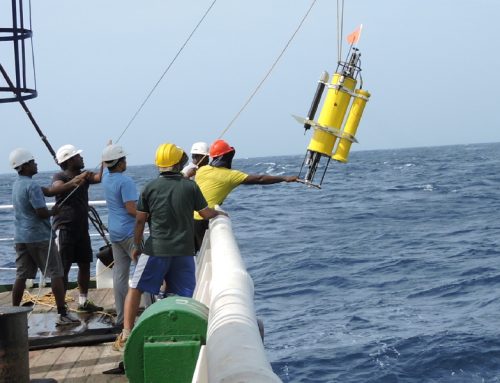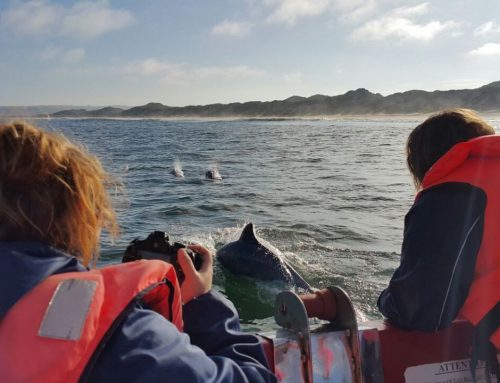 In our cities we have to move away from private cars towards public transport. In our freight transport we have to move from the roads back to the rails. How can this be achieved in a society where the first item people want to buy when they start earning more is a motor vehicle and where our railways leave much to be desired?
In our cities we have to move away from private cars towards public transport. In our freight transport we have to move from the roads back to the rails. How can this be achieved in a society where the first item people want to buy when they start earning more is a motor vehicle and where our railways leave much to be desired?
These are some of the critical transport dilemmas the WWF Nedbank Green Trust’s low carbon transport programme is researching. At the same time it is engaging with the Department of Transport’s low-carbon plans and the rollout of the government’s National Climate Change Response White Paper, which requires each economic sector to set carbon emission reduction targets and plans by the end of 2014.
“We chose to work on transport because it is a key economic sector, and contributor to South Africa’s emissions, second only to energy production. We are also the only environmental organisation working on this sector,” says Louise Naudé who heads up the WWF Nedbank Green Trust Transport Low-carbon Frameworks Programme.
At last count from a range of sources, emissions from transport in South Africa account for at least 12% of South Africa’s total greenhouse gas emissions (CO2-equivalent or ‘carbon emissions’) that cause global warming. Significantly, about 87% of this is from the combustion of diesel and petrol on our roads. Trends show that transport emissions are the fastest growing.
“We are exploring Low Carbon Frameworks or what a low carbon future could look like in the South African transport sector,” she explains.
“Our research and engagement is across business, labour and government to find transport solutions that deliver emission reductions, economic development and social equity. Our participation in government’s Transport Mitigation Task Team allows us to both critique and enrich the methods and results,” explains Naudé.
The Transport Task Team is part of the Department of Environmental Affairs analysis of the potential to cut emissions in the transport sector, with the commissioning of Marginal Abatement Cost Curves (MACCs) for the years 2020, 2030 and 2050. Taken together, the MACCs comprise the Mitigation Potential Analysis, which will go to Cabinet in October this year.
As part of their research, the WWF Nedbank Green Trust’s transport project team is conducting modelling processes in the passenger and freight sectors.
Passenger transport
“In the passenger sector we will model potential emissions reduction initiatives within Gauteng, looking at the impact on high-, middle- and low-income groups. Gauteng government has plans around public transport, including integrated bus, train and taxi networks based on a one-ticket system. So, for example, people can get off their bus or taxi and catch their train right there without having to walk long distances between stations or buy multiple tickets.
“Public transport needs to be a safe, pleasant and convenient experience, and stations need to be welcoming, safe places to be. While we often think we need big new infrastructure, a lot can be done to encourage more people to use public transport with smaller, job-intensive initiatives. For example, the buses, trains, taxis and stations need to be refurbished and the security needs to be improved,” says Naudé.
However, even with improved public transport, we still have the problem of trying to get people out of their private motor vehicles and into public transport. An increasing number of people are becoming better off in South Africa, and therefore car owners. “We are now researching how best to incentivise all income groups to use public transport. At the same time we are researching what effect this would have on the motor vehicle manufacturing industry and the jobs it provides. In other words, we try to look at the web of cause and effect loops in our model, which is called ‘systems dynamic modeling’,” Naudé explains.
It’s an holistic approach where all dynamics are considered, including how to rectify socio-economic anomalies where, for example, the lowest earners in our society are paying the highest transport bills. “Commuters who earn as little as R500 per month are paying over one-third of their income to get to work, which is both an issue of affordability and an urban planning issue requiring co-operation between various government departments,” says Naudé.
Interactive modelling
Rather than creating theoretical models, the research process is conducted through a series of workshops where the real decision-makers contribute and test the model. Business might, for example, reject a particular freight rail initiative on the basis that it is not profitable or that foodstuffs would not reach their destination in time. Following iterative workshops to get input from the key groupings, the model is refined so that it becomes a useful tool.
“We had our first workshops on passenger and freight transport with representatives from a range of government departments in April this year, including the Departments of Transport, Trade and Industry, and Treasury, and Gauteng provincial government. These are people who don’t often get to talk to each other, and they appreciated the opportunity to understand each other’s challenges.
“We’ve also had several workshops with labour in Mpumalanga, Free State, Eastern Cape, KZN and North West, which have been extremely successful. During these workshops we discuss the causes of climate change, sources of emissions from the transport sector, and what to do about these. The input from the shop floor has been fascinating, and the willingness of people to look at changes towards a green economy – from changes in patterns of consumption and production to re-skilling is encouraging. People understand that it is not going to happen overnight, that it will take decades, but that we need to start planning for the future now.”
Several more workshops for government, business and labour will be held over the course of this year and in 2014.
Freight transport
“In the freight sector we are researching the emissions per commodity per mode, such as moving coal on trains or foodstuffs on trucks. Our main focus will be on emissions reductions options for food logistics nationally and the consequences for jobs and developmental issues like food security,” says Naudé.
An example of a positive step forward is the recent signing of a memorandum of understanding between Transnet and Imperial Logistics, to create an integrated logistics service.
“Instead of Imperial regarding the future road-to-rail transition as a threat, they are looking to create an opportunity from it, which is precisely the kind of synergy we are wanting to encourage,” continues Naudé.
Woolworths has also taken steps over the years to ‘green’ their supply chain logistics. In partnership with WWF, it is enabling a case study of their food distribution logistics to achieve a lower carbon footprint. “This includes strategies like planning routes carefully and delivering at off-peak times to reduce the additional emissions of being stuck in daytime traffic.”
Carbon budget approach
The South African government has committed to reducing the country’s carbon emissions by 34% by 2020 and 42% by 2025 off a ‘business as usual’ trajectory.
Based on this, another aspect of the WWF Nedbank Green Trust programme is to research the country’s carbon budget: how best to use a given budget to achieve South Africa’s development objectives, while transforming our economy from one of high emissions intensity to a low-carbon economy.
“The climate science is showing us that there is a shrinking volume of carbon emissions that we can afford to emit into the earth’s atmosphere, if we want to avoid runaway climate change – this is what we call the global carbon budget,” Naudé explains. “International negotiations are driven by the question of how this ‘budget’ should be shared between countries.
“Our carbon budget work in South Africa will seek to address a similar question among different sectors and role players in the South African economy, in the interests of equity and low-carbon development. Which sectors and activities will need to shrink, which to grow and how about sectors that don’t even exist yet – in such a way that we remain within the ‘budget’ implied by government’s commitment?
We cannot afford to invest money in- nor waste emissions for infrastructure and other initiatives that take us in the wrong direction, hence WWF’s ‘Seize Your Power’ campaign, which calls for investment to be shifted from fossil fuels into renewables.”




